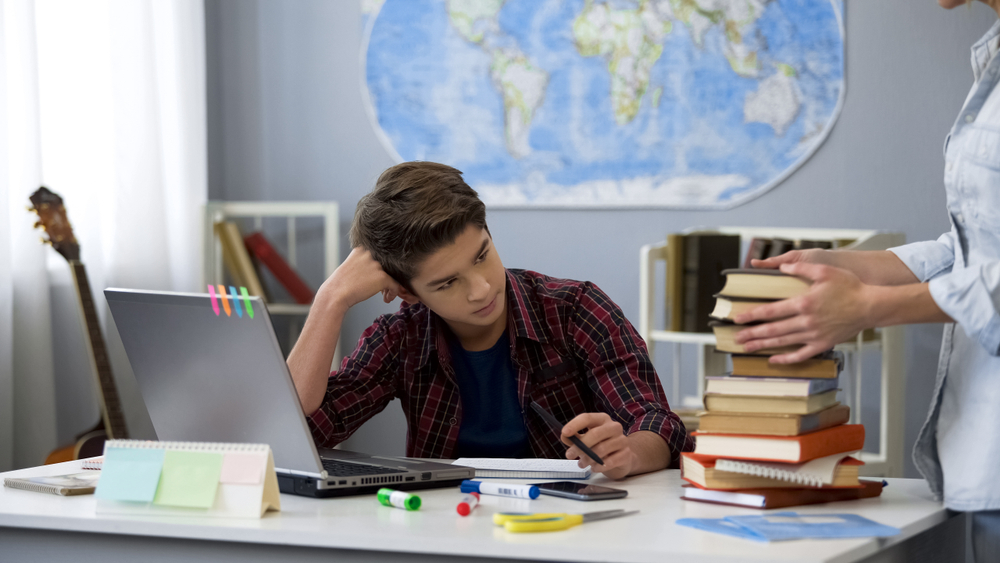
2023 is going to be a very telling year for reading education since it is the first full year that many students have returned to school after the Covid-19 pandemic. Most schools closed their classrooms in March 2020 to comply with social distancing requirements, and many spent the 2020-2021 school year six months later in limited capacity. Schools turned to online classrooms so students could continue to learn at home.
However, due to a variety of circumstances surrounding how school was conducted during the pandemic, students are now, on average, around six months behind in learning. While this includes all grades and subjects, this means that younger students learning to read are behind, too. This could be very detrimental not just for their education or their own lives. An entire generation of students being behind now will have wide-ranging societal impacts when they are adults.
As a result, this will be a high stakes year for getting students caught up on learning to read, especially students who are struggling.
Who Is Affected?
Children who were in kindergarten through second grade during the pandemic received the majority of their reading instruction through distance learning, usually using online classrooms and on demand modules. Online learning requires attention and discipline, and learning to read is best accomplished when students have explicit instruction. Many school districts struggle with teaching reading comprehension in a traditional classroom, and the pandemic exacerbated these issues.
This is more prevalent around vectors based on race or income, with Black and underprivileged students being 12 months behind. Students living in families with working or single parents had no one to guide them without the classroom environment. Some kids live in homes that cannot afford internet and do not have the benefit of remote instruction, or live in districts that could not provide classes over the internet.
Why Is It Important?
It is a crisis for all students to be so far behind in their studies, especially on such a wide scale. An entire generation of students being so far behind will grow up to be a generation of adults who will suffer from this deficiency. That includes workers in almost every profession, as well as politicians, decision makers, and emergency personnel. Our society simply cannot afford this unprecedented learning gap.
When it comes to reading, the gap especially affects kids entering 3rd grade because after fourth grade, reading is for grasping larger concepts. Everything a student learns is learned through reading and students who aren’t skilled at it by third grade are statistically doomed to academic failure. Many students who struggle with reading after third grade wind up dropping out as their struggles extend to other subjects. To have even more students struggling simply because they couldn’t be taught at the time is another of the many challenges that the pandemic brought to our daily lives.

How Did This Happen?
Researchers studied the effects of other emergencies and natural disasters on education, such as the obstacles faced by New Orleans schools in the aftermath of Hurricane Katrina, and noticed trends that can provide clues about how the pandemic will affect the academic futures of the children who lived through it. The data showed that extended school closures disproportionally affect impoverished neighborhoods, including those of many people of color.
For example, almost every parent across racial and income lines would prefer their students be tutored one-on-one or in small groups, and such tutoring has been shown to help struggling students get better at the skills required for literacy. However, there is an income gap between people who can afford tutors for their children and people who cannot.
As a result of each student’s specific circumstances, some individuals may be ahead of classes that are months behind, while others may be further behind the class average. Other circumstances that placed obstacles in students’ learning to read during the pandemic included parents who worked through the pandemic, and parents for whom English was not the first language. Both of these circumstances created situations where students were left on their own to guide themselves through reading at critical periods of the skill building process.
Because of these factors, it is not only regions which may be suffering, but also individual students, based on what support they could or could not get at home. Usually a natural disaster only affects one area of the country, so the pandemic caused these findings to be applied on a much larger scale than a single region.
What Do the Experts Say?
Ideally, the learning gap imposed by Covid-19 would be alleviated by adding another month to the school year. This would require students to be in the classroom, where they would get in-person lessons that include reading in groups with other students and having the teacher and aides available to help kids who are struggling. Adding more time to the school year isn’t a popular option for parents or teachers, however.
Many schools have tried setting up tutoring programs, but they are only adequate when they are being used by parents. Students are able to meet in small groups of up to four and get personalized attention. However, many parents either can’t or don’t use these resources, especially if there are work schedules involved.
In a survey that asked parents for input on addressing the Covid-19 learning gap, researchers learned that parents place more value on in-person programs such as tutoring, but not summer school. However, funds are being allocated to other resources, particularly summer school. Also more investment is being made into high-income areas, where such programs are used more often and more in-person programs are available. How education funding and grants are used also makes a huge impact on recovering academically from the pandemic.

How Can We Help Our Students?
There is no single solution that can catch students up from so much time spent outside the classroom. Overcoming the obstacles presented by learning lag caused by the pandemic will be as unprecedented as the pandemic itself. It will take a lot of effort on everyone’s part, from teachers and administrators to parents and students. It is only an insurmountable problem if it is not adequately addressed.
Adjust Expectations
Since there is such disparity among students based on individual needs, it will be important to assess each student’s literacy as well as that of entire classrooms. Although typically we refer to reading level by grade, it may be useful to drop those expectations as we recover from the pandemic, and work more at the level students are now rather than trying to catch them up to cookie-cutter benchmarks. After the trauma of the 2020 and 2021 school years, it is reasonable to expect that students will be behind in a lot of subjects.
Use the Summer
It may not be the most popular of options, but at this time, avoiding summer school is an expectation that we need to drop for the sake of our children. Summer school has a lot of stigma attached to it, because in popular perception summer school is for discipline cases, lazy students, and students who are just “dumb.” The reality is that summer school is more like free tutoring for students who are struggling. A lot of localized funding is going to summer school programs, and it’s a good idea for students to use them while parents and schools seek better solutions.

Remote Classrooms
Among the proposals to alleviate pandemic-induced learning lag is the extension of online learning to a more permanent format. One of the issues the pandemic has caused is a higher rate of absenteeism, with a larger percentage of students considered chronically absent from school. As new waves of Covid continue to strike, also keeping immunocompromised kids from going out, it is not unexpected that these rates would go up, but they need to be compensated for.
Permanent home schooling is one solution that has been explored, allowing students to engage in distance learning with their local school district without setting foot in the classroom. This can be accomplished through both modules and conference calls. Hybrid learning allows students to divide their time between home and school, only showing up for class at scheduled times and managing the rest of their schoolwork on their own time. In both scenarios, students would be held to deadlines and due dates, but in a format that can accommodate their absences and help them keep up without putting them at risk.
Tailor Programs to Regional and Local Needs
Not every program can be implemented the same way. For example, rural areas have different needs from urban areas, in that residents are spread over a larger area and may not have the same internet access as their urban peers. Urban residents live closer to their peers and have more resources nearby, even within walking distance. As a result, investing heavily in online learning in a rural area may not be as effective as doing so in an urban area.
Further, students in locales that don’t have a lot of resources need funding directed to improve these conditions. While this was important before the pandemic, the inequality between high-income and low-income students has widened since Covid-19.
Mental and Social Health
The pandemic was hard on adults, but kids are in formative years of socialization and self-exploration that was hindered by lockdowns and social distancing practices. This has taken as much of a toll on students as it has on the adults in the world around them. The pandemic caused a lot of disruption to their lives, and long breaks from school also contribute to learning lag. Students need support to help cope with both the process of catching up and returning to a normal school schedule after such a long break.
Get Parents Involved
The most important support students can get when it comes to learning to read is at home. With adequate support from parents and caregivers, kids benefit while learning to read up until the eighth grade. Providing an environment where students can practice their reading is as important for them as reading to them yourself. Overcoming the pandemic learning gap will require support from everyone in a student’s life, especially at home.

 Español
Español